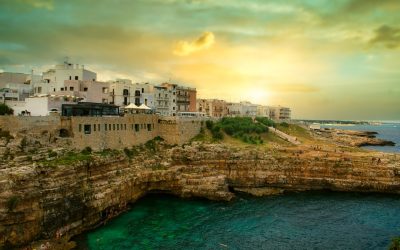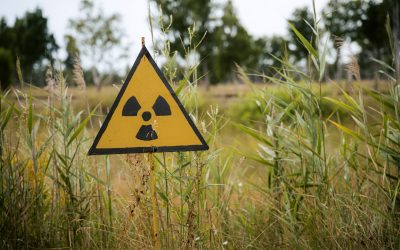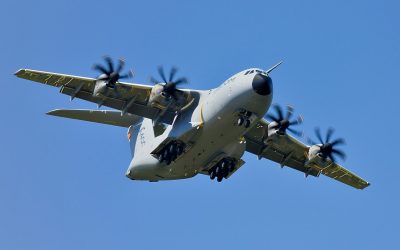Explore the World Through Geography, Natural Resources & Daily History
Clear, reliable and engaging guides that help you understand our planet — from UK geography education to global natural resources and On This Day history events.
Explore, discover, and learn about the wonders of our world! At Earth Site, we’re passionate about bringing geography, history, and science to life for curious minds of all ages. Whether you’re delving into historical events, uncovering the mysteries of the natural world, or seeking interactive resources, you’re in the right place.
Here, you can uncover the stories behind historical events, explore the natural wonders of our planet, and gain valuable insights into how the Earth’s systems shape our daily lives. From the towering peaks of mountain ranges to the far-reaching impacts of human innovation, we aim to make every topic both engaging and informative.
Start your journey of discovery with us today, and let’s make learning an adventure!
What We Cover
Earth Site brings together engaging and accessible educational content designed to help you understand the world, its history, and its natural systems.
🌍 Geography Education (UK & Worldwide)
We publish clear, easy-to-understand geography resources for students, teachers and curious learners. Our guides support geography education in the UK and cover physical geography, climate, ecosystems, population, and global development.
⛏️ Natural Resources & Environmental Geography
Explore detailed country profiles covering natural resources, mining, energy, geology and global environmental challenges. We show how nations manage minerals, water, land and ecosystems, and why these resources matter.
📅 On This Day in History
Every day has a story. Our On This Day history series features major events, anniversaries, traditions, and cultural milestones from around the world — with timelines, context, and fun facts.
TIMELINE
Exploring the Grandeur of Blenheim Palace: A Stately Home Fit for Royalty
Blenheim Palace, located in Woodstock, Oxfordshire, is one of the most iconic stately homes in the United Kingdom. It is a masterpiece of Baroque architecture and is renowned for its stunning grounds and rich history. Built in the early 18th century, Blenheim Palace has been the ancestral home of the Churchill family for over 300 years. It is a UNESCO World Heritage Site and attracts thousands of visitors each year. Blenheim Palace holds great importance in British history and culture. It was built as a gift to John Churchill, the 1st Duke of Marlborough, by Queen Anne for his victory at the Battle of Blenheim in 1704. The palace has since been passed down through generations of the Churchill family and has played a significant role in shaping British politics and society. It is also closely associated with Sir Winston Churchill, one of Britain’s greatest leaders, who was born at Blenheim Palace in 1874. Summary Blenheim Palace is a stunning example of British architecture, located in Oxfordshire. The palace has a rich history, having been built as a gift to the first Duke of Marlborough in the early 18th century. The palace’s baroque architecture is a sight to behold, with intricate details and grandeur throughout. The grounds of Blenheim Palace are equally impressive, with a picturesque landscape and beautiful gardens. Visitors can explore the state rooms of the palace, which are filled with opulence and elegance, as well as a Churchill exhibition. The History of Blenheim Palace: A Legacy of the Churchill Family The history of Blenheim Palace is deeply intertwined with that of the Churchill family. John...
Uncovering the Wonders of Barium: A British Perspective
Barium is a chemical element with the symbol Ba and atomic number 56. It is a soft, silvery-white metal that is highly reactive and found in various minerals. Barium has a wide range of applications in different industries, including medicine, agriculture, and the chemical industry. In this article, we will explore the discovery of barium, its role in the human body, its importance in industrial applications, its environmental impact, and its future potential. Summary Barium was discovered in 1774 by Carl Wilhelm Scheele and was named after the Greek word “barys” meaning heavy. Barium plays a crucial role in the human body, particularly in nerve and muscle function, and is commonly used in medical diagnostic tests. Barium is widely used in industrial applications, including the production of glass, ceramics, and electronics. The environmental impact of barium is a concern, particularly in areas where it is heavily mined or used in industrial processes. Barium has potential for emerging applications in fields such as energy storage and catalysis, but safe handling and disposal are crucial for protecting human health and the environment. The Discovery of Barium: A Brief History Barium was first discovered in the late 18th century by Swedish chemist Carl Wilhelm Scheele and English chemist Humphry Davy. Scheele initially identified a new mineral called “barytes” which he believed contained a new element. Davy later isolated barium metal through the electrolysis of molten barium salts. The name “barium” was derived from the Greek word “barys,” meaning heavy, due to its high density. Historically, barium compounds were used in various applications. For example, barium sulfate was used as a white pigment...
Oxfordshire, England
Oxfordshire, located in the heart of England, is a county known for its rich history, stunning natural landscapes, prestigious universities, and vibrant arts and culture scene. This blog post will provide a comprehensive guide to exploring Oxfordshire, highlighting its historical sites, natural beauty, famous universities, top tourist attractions, local cuisine, arts and culture scene, sporting traditions, accommodation options, festivals and events, and charming towns and villages. Whether you are a history buff, nature lover, foodie, art enthusiast, sports fan, or simply looking for a relaxing getaway, Oxfordshire has something to offer for everyone. Summary Oxfordshire has a rich history and heritage, with landmarks such as Blenheim Palace and the Ashmolean Museum. The county boasts stunning natural beauty, including the Cotswolds and the Chiltern Hills. Oxfordshire is home to world-renowned universities, including Oxford and the University of Reading. Visitors should check out popular attractions like Bicester Village and the Oxford Botanic Garden. Oxfordshire’s food culture is unique, with local specialities like Banbury cakes and Oxford sausages. The History and Heritage of Oxfordshire Oxfordshire has a fascinating history that dates back thousands of years. The county is home to several key historical sites and landmarks that are worth visiting. One of the most iconic landmarks in Oxfordshire is the University of Oxford, which was founded in the 12th century and is one of the oldest universities in the world. The university’s stunning architecture and rich history make it a must-visit attraction. Another historical site in Oxfordshire is Blenheim Palace, a UNESCO World Heritage Site and the birthplace of Sir Winston Churchill. This magnificent palace is surrounded by beautiful gardens and...
military personel in Nato states
The North Atlantic Treaty Organization (NATO) is an intergovernmental military alliance that was established in 1949. Its primary purpose is to promote the collective defense and security of its member states. NATO was formed in response to the growing threat of the Soviet Union during the Cold War. The organization has since evolved to address new security challenges and has expanded its membership to include 30 countries. Currently, NATO has 30 member states, including the United States, Canada, the United Kingdom, Germany, France, and Turkey, among others. These member states are located in North America and Europe. Each member state contributes to the alliance by providing military personnel, equipment, and financial resources. Summary NATO is a military alliance consisting of 30 member states. The total number of military personnel in NATO states is over 3 million. Recruitment and training of military personnel in NATO states vary, but all members have a commitment to maintaining high standards. Military personnel in NATO states have a range of roles and responsibilities, including defence, peacekeeping, and humanitarian missions. NATO states use advanced equipment and technology to support their military operations. Overview of Military Personnel in NATO States The total number of military personnel in NATO states is approximately 3.5 million. This includes active duty personnel, reserve forces, and civilian employees working in defense-related roles. The distribution of military personnel varies among member states, with larger countries like the United States and Russia having the highest numbers. The United States has the largest military force among NATO member states, with over 1.3 million active duty personnel. Other countries with significant military forces include Russia...
Naval power of nato
NATO, the North Atlantic Treaty Organization, is an intergovernmental military alliance that was established in 1949. It consists of 30 member countries from North America and Europe, and its primary purpose is to ensure the collective defense of its members. NATO‘s naval power plays a crucial role in maintaining global security by deterring potential threats and responding to crisis situations. Naval power is of utmost importance in ensuring the safety and security of maritime trade routes, as well as protecting member states from potential aggression. Summary NATO’s naval power plays a crucial role in global security. NATO’s maritime strategy and capabilities have evolved over time. Naval power is an important aspect of NATO’s defence policy. NATO’s maritime forces are involved in crisis management. NATO’s naval power contributes to counter-terrorism operations and the fight against piracy. The Role of NATO’s Naval Power in Global Security NATO’s naval power plays a significant role in maintaining global security. The alliance’s naval forces contribute to the deterrence of potential threats by conducting regular patrols and exercises in strategic areas. These activities send a clear message to potential adversaries that any aggression will be met with a swift and decisive response. Additionally, NATO’s naval forces are often deployed to crisis areas to provide humanitarian assistance, disaster relief, and support for peacekeeping operations. Naval power is particularly important in deterring potential threats because it allows for rapid response and flexibility. Naval forces can be deployed quickly to any part of the world, providing a visible presence that serves as a deterrent to potential aggressors. Furthermore, naval forces have the capability to project power over long...
Nuclear power of nato
NATO, the North Atlantic Treaty Organization, is an intergovernmental military alliance that was established in 1949. One of the key aspects of NATO‘s defence strategy is its nuclear power program. Nuclear weapons have long been seen as a crucial element in international relations, providing a deterrent against potential adversaries and ensuring peace and stability. In this article, we will explore the history of NATO’s nuclear power program, its role in NATO’s defence strategy, the nuclear sharing agreement among member states, the ongoing debate on nuclear weapons, and the future of NATO’s nuclear power program. Summary NATO has a nuclear power program that includes the deployment of nuclear weapons in Europe. The program dates back to the Cold War era and was developed as a deterrent against Soviet aggression. Nuclear weapons are still seen as a key part of NATO’s defence strategy, despite efforts to reduce their role. The nuclear sharing agreement allows non-nuclear states to participate in NATO’s nuclear program. There is ongoing debate about the risks and benefits of NATO’s nuclear power program, and its impact on international relations. The History of NATO’s Nuclear Power Program The origins of NATO’s nuclear power program can be traced back to the early days of the Cold War. Following World War II, there was a growing concern among Western European countries about the Soviet Union’s expansionist ambitions. In response to this perceived threat, several NATO member states began developing their own nuclear weapons programs. The United States, as the leading member of NATO, played a crucial role in assisting these countries in their nuclear endeavors. Over time, NATO’s nuclear strategy evolved...
Military Power of nato
NATO, or the North Atlantic Treaty Organization, was established in 1949 as a collective defense alliance between North American and European countries. Its primary purpose was to counter the threat posed by the Soviet Union during the Cold War. Over the years, NATO has evolved into a powerful military alliance that plays a crucial role in global security. NATO’s military power is derived from its member countries, which include some of the world’s most advanced and capable militaries. These countries pool their resources and capabilities to enhance their collective defense and deter potential adversaries. NATO’s military power is also bolstered by its extensive network of partnerships and alliances with other countries and organizations. Summary NATO is a military alliance formed in 1949 to counter the Soviet Union’s influence in Europe. NATO’s role in global security has expanded to include counterterrorism, cyber defense, and crisis management. NATO’s military capabilities include air, land, and sea forces, as well as intelligence and surveillance capabilities. NATO conducts regular military exercises and training programs to maintain readiness and interoperability among member states. NATO has conducted military operations and missions in Europe, the Middle East, and Africa, including peacekeeping and combat operations. The Role of NATO in Global Security NATO’s mission is to safeguard the freedom and security of its member countries through political and military means. Its objectives include collective defense, crisis management, and cooperative security. NATO’s military power plays a vital role in achieving these objectives and maintaining global security. One of NATO’s key contributions to global security is its commitment to collective defense. Article 5 of the NATO treaty states that an...
Member States of NATO
The North Atlantic Treaty Organization (NATO) is an intergovernmental military alliance that was established in 1949. Its primary purpose is to promote the collective defense and security of its member states. NATO was formed in response to the growing threat of the Soviet Union during the Cold War, with the aim of deterring aggression and maintaining peace in Europe. NATO currently has 32 member states, including countries from North America and Europe. These member states are committed to the principles of democracy, individual liberty, and the rule of law. They work together to address common security challenges and promote stability in the Euro-Atlantic region. Summary NATO is an alliance of 32 member states committed to collective defence and security. The founding members of NATO were the United States, Canada, and ten European countries. NATO has expanded to include 22 additional member states since its founding in 1949. NATO plays a crucial role in maintaining peace and security in Europe through its collective defence and crisis management capabilities. Membership in NATO provides economic and political benefits, as well as access to military capabilities and cooperation with other member states. The Founding Members of NATO When NATO was founded in 1949, it consisted of 12 member states: Belgium, Canada, Denmark, France, Iceland, Italy, Luxembourg, the Netherlands, Norway, Portugal, the United Kingdom, and the United States. These founding members played a crucial role in establishing the alliance and shaping its policies. During the Cold War, the alliance between these 12 countries was instrumental in deterring Soviet aggression and maintaining peace in Europe. The United States provided military support and acted as...
Nottinghamshire, England
Located in the heart of England, Nottinghamshire is a county that offers a wealth of attractions and experiences for visitors. From its rich history and heritage to its stunning natural beauty and bustling cities, Nottinghamshire has something for everyone. Whether you are interested in exploring ancient castles, immersing yourself in the arts and culture scene, or simply enjoying the picturesque countryside, Nottinghamshire has it all. Summary Nottinghamshire boasts a rich history and heritage, with evidence of human activity dating back to the Ice Age. The charming towns and villages of Nottinghamshire offer a glimpse into the county’s past, with well-preserved architecture and quaint streets. Nottinghamshire’s stunning natural beauty and scenic countryside make it a popular destination for outdoor enthusiasts and nature lovers. The famous landmarks and attractions of Nottinghamshire, such as Sherwood Forest and Nottingham Castle, draw visitors from around the world. Nottinghamshire’s thriving arts and culture scene includes world-class museums, galleries, and theatres, as well as a vibrant music and festival scene. Nottinghamshire’s rich history and heritage Nottingham Castle and Robin Hood One of the most iconic landmarks in Nottinghamshire is Nottingham Castle. Built in the 17th century on the site of the original medieval castle, it offers panoramic views of the city and is steeped in history. The castle is famously associated with the legendary outlaw Robin Hood, who is said to have roamed Sherwood Forest and used the castle as a hideout. Visitors can explore the castle grounds, visit the museum, and learn about the fascinating history of this legendary figure. The Lace Market and textile industry Nottinghamshire has a long history of lace making...
NATO Airforce
The NATO Airforce, also known as the North Atlantic Treaty Organization Airforce, is a collective defense alliance formed by 30 member countries. It was established in 1949 with the signing of the North Atlantic Treaty, and its primary purpose is to ensure the security and defense of its member nations. The NATO Airforce plays a crucial role in maintaining peace and stability in the Euro-Atlantic region. The history of the NATO Airforce dates back to the Cold War era when the threat of Soviet aggression loomed over Europe. The alliance was formed as a response to this threat, with the aim of deterring any potential attack on its member countries. Over the years, the NATO Airforce has evolved and adapted to changing security challenges, including counter-terrorism operations and humanitarian missions. Summary NATO Airforce was established in 1949 to provide collective defence against potential threats to member countries. Member countries of NATO Airforce have different roles and responsibilities, including air policing, air defence, and air support. NATO Airforce operations include air surveillance, air-to-air refuelling, and air strikes in support of ground troops. Aircrafts used by NATO Airforce have advanced features and capabilities, including stealth technology and precision-guided weapons. NATO Airforce offers various training programs and techniques to its personnel, including simulation exercises and joint training with partner countries. Member Countries of NATO Airforce: Roles and Responsibilities The NATO Airforce consists of 30 member countries, including the United States, United Kingdom, Germany, France, and Turkey, among others. Each member country has its own roles and responsibilities within the alliance. The United States, being the largest contributor to NATO, plays a significant...
Sussex, England
See Also: East Sussex West Sussex Located in the southeastern part of England, Sussex is a county known for its rich history, stunning countryside, and charming towns. With its proximity to London and its diverse range of attractions, Sussex has become a popular destination for tourists from all over the world. Sussex has a long and fascinating history that dates back thousands of years. It was once home to the ancient Britons and later became part of the Roman Empire. The county is dotted with historic sites, including castles, stately homes, and prehistoric sites, which offer a glimpse into its past. In addition to its historical significance, Sussex is also known for its picturesque countryside. From rolling hills and meandering rivers to beautiful beaches and nature reserves, there is no shortage of natural beauty to explore in this part of England. Summary Sussex offers a charming blend of history and natural beauty. Visitors can explore rolling hills, beaches, nature reserves, castles, and prehistoric sites. The cultural scene in Sussex includes art galleries, theatres, and festivals. Foodies will love Sussex’s local produce, fine dining, and traditional pub grub. Sussex offers a range of accommodation options, from luxury hotels to quaint B&Bs and self-catering cottages. Discovering the Best of Sussex’s Countryside: Rolling Hills, Beaches, and Nature Reserves One of the highlights of Sussex’s countryside is the South Downs National Park. Covering an area of over 1,600 square kilometers, this national park offers breathtaking views of rolling hills, picturesque villages, and ancient woodlands. Visitors can explore the park on foot or by bike, following the many walking trails and cycling routes that...
NATO North Atlantic Treaty Organization
The North Atlantic Treaty Organization, commonly known as NATO, is an intergovernmental military alliance that was established in 1949. It was created with the aim of promoting collective defense and maintaining peace and stability in the North Atlantic region. NATO is based on the principle of collective security, where an attack on one member is considered an attack on all, and all members are obligated to respond. The purpose of NATO is to safeguard the freedom and security of its member countries through political and military means. It serves as a forum for consultation and cooperation among its members, and it provides a platform for collective decision-making on matters of common interest. NATO also plays a crucial role in promoting democratic values, human rights, and the rule of law. Summary NATO is a military alliance formed in 1949 to provide collective defense against potential threats. NATO has 30 member countries, including the United States, Canada, and most of Europe. NATO’s role is to maintain peace and stability through collective defense, crisis management, and cooperative security. NATO’s command structure is divided into two strategic commands, with the Supreme Allied Commander Europe and the Supreme Allied Commander Transformation in charge. NATO faces challenges in the future, including cyber threats, terrorism, and the rise of China. History of NATO: From its inception to the present day. NATO was founded in 1949 in response to the growing threat posed by the Soviet Union during the early years of the Cold War. The alliance was formed by 12 founding members: Belgium, Canada, Denmark, France, Iceland, Italy, Luxembourg, the Netherlands, Norway, Portugal, the United Kingdom,...











